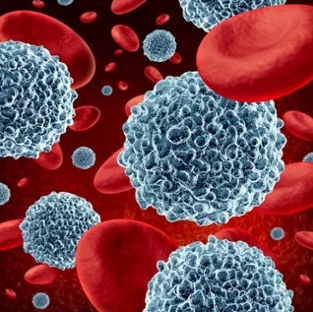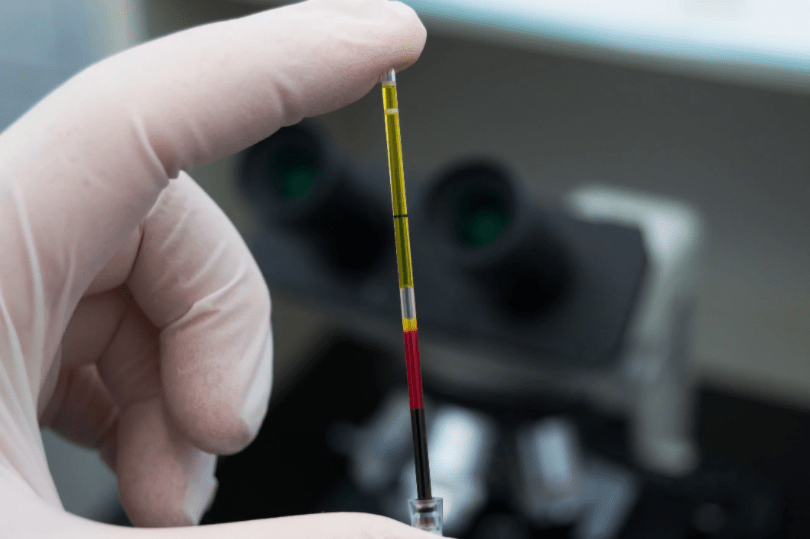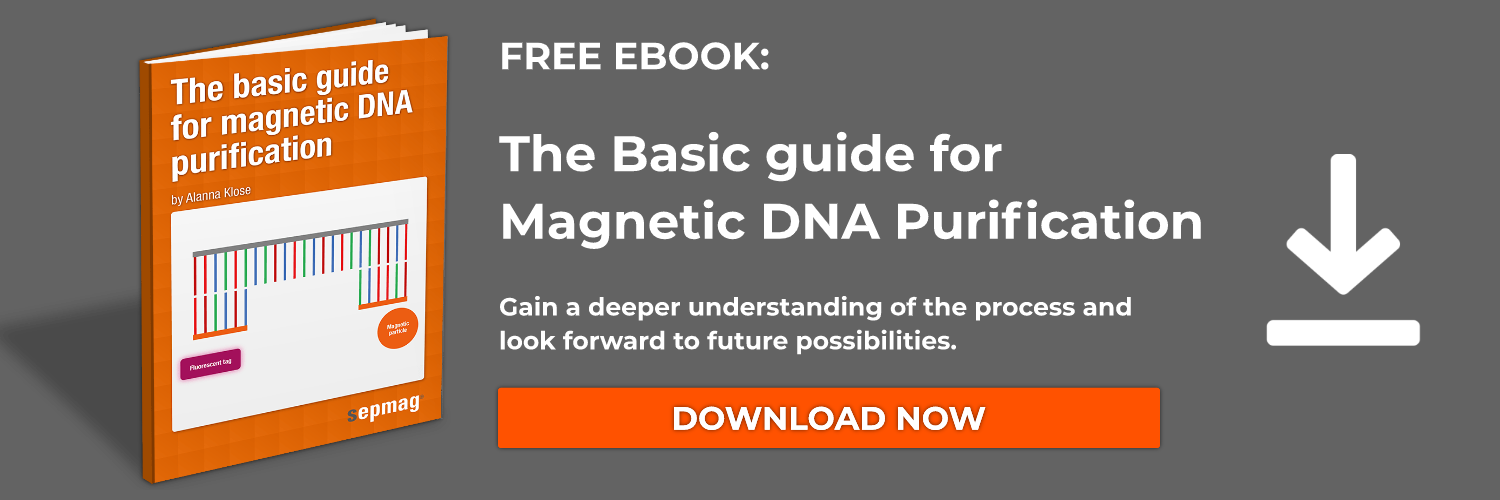Circulating Tumor Cells (CTCs) are cancerous cells that dissociate from a tumor and circulate throughout the bloodstream. Therefore, the detection of CTCs in the bloodstream is an indicator of cancer progression and an early sign of metastasis. CTCs are not hematopoetic in origin, and they do not express the cell surface marker CD45. However, they do express the surface antigen EpCAM, which is commonly expressed on epithelial cells. Immunomagnetic separation methods take advantage of these surface markers to isolate CTCs from centrifuged blood samples.
Density gradient centrifuged blood
When isolating CTCs from patient blood samples it is standard practice to use a centrifuge to separate the cells based on size and density into more manageable cell populations. A common method to isolate peripheral blood mononuclear cells (PBMCs) is density gradient separation. Standard protocols and materials are available for this purpose. The tubes used for density gradient separation are filled with a high molecular weight polymer. The blood is added to the density gradient separation tube and centrifuged for 30 to 40 minutes. During this time the centrifuged blood separates into layers aided by the polymer matrix. A typical separation results in a bottom layer of erythrocytes followed by a layer of granulocytes, which is covered by a layer of mononuclear cells before being topped off with the low-density plasma. The CTCs are mononuclear cells. The mononuclear cell layer of the centrifuged blood is collected and further processed by immunomagentic separation.
Immunomagnetic selection of CTCs
Immunomagnetic separation is a method of cell isolation(link) known as magnetic activated cell sorting. The technique requires a magnetic separation rack that consists of a permanent magnet. This magnet sets up a constant magnetic field gradient. When a cell sample labeled with magnetic beads is placed near the magnet, the magnetically labeled cells move toward the magnet while unlabeled cells remain behind in the bulk solution. Positive selection via immunomagnetic separation is performed by labeling the cells of interest with the magnetic beads. Negative selection involves labeling the unwanted cells with the magnetic beads and retaining the cells left in solution. The labeling is performed by magnetic-bead-conjugated antibodies that target identifying surface proteins on the cells.
In the case of selecting CTCs with immunomagnetic selection, magnetic beads coated with anti-CD45 are used for negative selection, while beads coated with anti-EpCAM are used for positive selection of CTCs. There are a few commercial kits available for this process. One comparison study found that positive selection gave an average recovery rate of 75%, while the recovery rate for negative selection was 97%. However, the contamination of the CTC sample by other cell types was lower when positive selection was used. Therefore, positive selection seems to be the best method of immunomagnetic separation of CTCs when high purity is needed for downstream molecular processes. It can also be useful to note that EpCAM is downregulated during epithelial mesenchymal transition, so other markers such as Twist, Vimentin, and ALDH1, which are overexpressed in CTCs could be good targets for immunomagnetic separation of CTCs.
The centrifuge is a useful tool to prepare samples for immunomagnetic separation and other isolation procedures. There are many different cell types in blood, and centrifuged blood is much easier to work with. The use of density gradient columns makes the separation process more straightforward. The density gradient matrix is known to collect a specific cell type in a particular location within the column. Different columns are available for different experimental or clinical goals. As always, immunomagnetic separation is only as good as the choice of surface antibody to coat the beads, and choice of magnetic separation rack.
Traditional magnetic separation racks can set up magnetic forces that are too strong close to the magnet, which can cause cells to burst from the excess force. Modern separation racks are designed to set up a homogeneous magnetic force throughout the working volume to prevent cell damage and increase magnetic separation efficiency
Microfluidic immunomagnetic cell separation fromwhole blood

The use of biomagnetic separation techniques for the purification of cells and molecules is now widespread and known as an efficient purification method. Although there is always space to improve this technology as demonstrated by Bhuvanendran and colleagues in a recent paper. These researchers designed a microfluidic device to be applied for the capture of cells tagged with magnetic particles. The device is simple and efficient due to chip format that allows the integration of customizable permanent magnets, which create magnetic field gradients that provide the force necessary to retain the tagged cells within the chip. The effective capture of magnetic beads is based in the combination of magnetic and fluid dynamic forces since the fluid inside the chip has a constant laminar flow. The authors were able to predict the the cell separation effectiveness and the behavior of cells inside the chipwith afinite element analysis model. This model was useful to determine the best experimental condition for the design of the chip and its validity was confirmed experimentally.
The authors tested the technique by capturing white blood cells from whole human blood. To do this they used CD45-conjugated magnetic particles to label leukocytes in the blood samples. Then, the whole blood with magnetic beads was flown through the chip microfluidic system under the influence of a magnetic gradient field. This allowed the labeled white blood cells to be retained inside the chip while all the remaining blood cells were flushed through. After the elution of blood cells, white blood cells where recovered by removing the magnetic field and flushing them through the device. This protocol was successful with a capture efficiency of 99.9%. This shows that the device can be applied for both negative and positive selection of cells.
Microfluidic immunomagnetic cell separation from whole blood.Bhuvanendran Nair Gourikutty, S., Chang, C. P. &Puiu, P. D. B J. Chromatogr.1011, 77–88 (2016).
Related news





